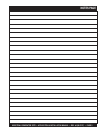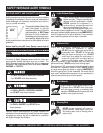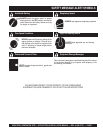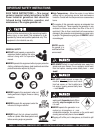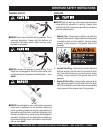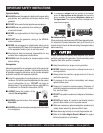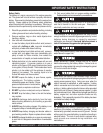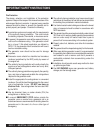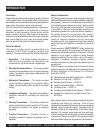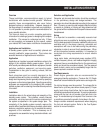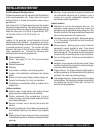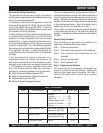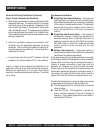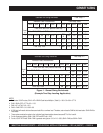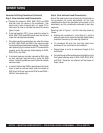
INDUSTRIAL GENERATOR SETS — APPLICATION & INSTALLATION MANUAL — REV. #4 (09/07/07) — PAGE 13
Transporting
■
Always shutdown engine before transporting.
■
Never transport generator with air intake doors open.
■
Tighten fuel tank cap securely.
■
Drain fuel when transporting generator over long distances
or bad roads.
■
Always tie-down the generator during transportation by
securing the generator.
■
If the generator is mounted on a trailer, make sure the
trailer complies with all local and state safety
transportation laws. See the operation manual for towing
procedures.
■
The transporting vehicle/trailer must be sized for the
dimension and weight of the genset. Consult the set
dimensional drawing or contact the factory for information
(weight, dimensions) pertinent to planning transport. The
overall height of a generator set in transit (including
vehicle/trailer) must not exceed 13.5 ft (4.1 m) unless
special hauling permits are obtained (check Federal,
State, and local laws prior to transporting). Larger units
(above 1000 kW) should be transported on low-boy-type
trailers with a deck height of 25 in. (635 mm) or less to
meet clearance requirements. Large (unboxed) generators
with radiators should be loaded with the radiator facing
the rear to reduce wind resistance while in transit.
Radiators with free-wheel fans must have the fan secured
to prevent rotation that might introduce flying objects to
the radiator core or fan blades.
■
Even the heaviest of units is capable of movement
during shipment unless properly secured. Fasten the
set to the vehicle/trailer bed with properly sized chain
routed through the mounting holes of the skid. Use chain
tighteners to remove slack from the mounting chain.
Cover the entire unit with a heavy-duty tarpaulin and
secure tarpaulin to the genset or trailer as circumstances
dictate.
Lifting the Generator Set
■
Before lifting, make sure the generator's lifting devices
are secure and that there is no apparent damage to the
generator itself (loose screws, nuts and bolts). If any
part is loose or damaged, please take corrective action
before lifting.
■
Always drain fuel prior to lifting.
■
Always make sure crane or lifting device has been
properly secured to the hook of guard frame on generator.
■
NEVER lift the machine while the engine is running.
■
Use adequate lifting cable (wire or rope) of sufficient
strength.
■
When lifting the generator, always use the balanced
center-point suspension hook and lift straight upwards.
■
NEVER allow any person or animal to stand underneath
the machine while lifting. Make sure the lifting path of
the generator set is clear before moving.
■
When loading the generator on a truck, be sure to use
the front and back frame bars as a means to secure the
generator during transport.
■
Do not lift the generator set by the lifting eyes attached
to the engine and/or alternator. These lifting eyes are
used only during generator assembly and are not capable
of supporting the entire weight of the genset.
■
A four-point lifting method is necessary to lift the genset.
To maintain generator balance during lifting, the lifting
apparatus must utilize the four skid lifting holes. One
method of lifting the genset uses an apparatus of hooks
and cables joined at a single rigging point. The use of
spreader bars is necessary with this method to avoid
damage to the set during the lifting procedure. The
spreader bars should be slightly wider than the genset
skid so the set is not damaged by lifting cables and only
vertical force is applied to the skid while lifting. The
genset may also be lifted by placing bares through the
skid lifting holes and attaching hooks to the end of the
bars. Be sure all lifting equipment is properly sized for
the weight of the genset.
IMPORTANT SAFETY INSTRUCTIONS



